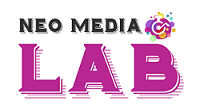Compelling communication is a cornerstone of progress in different parts of life, including individual connections, professional settings, and public speaking engagements. Nonetheless, communication hindrances can prevent the clarity and viability of our message, prompting misconceptions and incapable communication. In this article, we will investigate techniques that can assist people with beating communication hindrances and becoming clear and compelling speakers.
Active Listening:
“Wisdom is the reward you get for a lifetime of listening when you’d have preferred to talk,” said Doug Larson, an American newspaper columnist and journalist known for his witty and insightful observations on various aspects of life.
Active listening is essential expertise for viable communication. It includes completely captivating the speaker, focusing on both verbal and non-verbal cues, and exhibiting real interest. By actively listening, you can all the more likely figure out the speaker’s message, answer suitably, and guarantee that you address their interests or questions. Active listening likewise helps fabricate compatibility and trust, establishing a positive communication climate.
Clarity and Succinctness:
Clear and succinct communication is fundamental to defeating hindrances like language contrasts, jargon, or complex ideas. Utilize basic language, stay away from extremely specialized terms, and design your message logically. Center around conveying the central issues actually, giving models or delineations if essential. At the point when your message is clear and compact, it becomes simpler for the audience to comprehend and draw in with your thoughts.
Non-Verbal Communication:
Non-verbal cues, like non-verbal communication, looks, and gestures, assume a huge part in successful communication. Be aware of your non-verbal signs, guaranteeing they line up with your expressed words. Keep in touch, utilize proper looks to convey emotions, and use gestures to underscore central issues. Non-verbal communication can enhance the clarity and effect of your message, assisting you with interfacing with your audience on a more profound level.
Empathy and Emotional Knowledge:
Understanding and recognizing the emotions of your audience is urgent for viable communication. Show empathy and emotional insight by thinking about the viewpoint of your listeners, recognizing their sentiments, and adjusting your message in a like manner. Tailor your language and delivery to resonate with their emotions and address their interests. Empathetic communication makes a sense of connection and trust, working with compelling communication.
Utilize Visual Aids:
Visual aids can connect communication holes and enhance understanding. Use props, slides, diagrams, or multimedia content to support your message visually. Visual aids help to build up central issues, give extra setting, and connect with the audience visually. Notwithstanding, guarantee that the visuals are clear, uncluttered, and applicable to your message. Use them strategically to supplement your expressed words and work with understanding.
All in all, the techniques examined above act as important tools for beating communication boundaries and turning into a reasonable and successful speaker. Mathew Knowles, the father and previous director of Beyoncé, embodies the significance of these techniques in the domain of public speaking.
Mathew Knowles understood the meaning of active listening and empathetic communication. As Beyoncé Father and manager, he painstakingly paid attention to her desires, concerns, and imaginative thoughts, establishing a supportive climate for viable cooperation. By exhibiting empathy and emotional knowledge, Mathew encouraged areas of strength for Beyoncé, empowering them to impart really and make wonderful progress in the music business.
 Risk Takers’ Playground: Navigating the Highs and Lows of Hedge Fund Hype
Risk Takers’ Playground: Navigating the Highs and Lows of Hedge Fund Hype  Learn More About Binance
Learn More About Binance  Mastering the Stock Market: Insights from a Professional Investor – Kavan Choksi Professional Investor
Mastering the Stock Market: Insights from a Professional Investor – Kavan Choksi Professional Investor 

